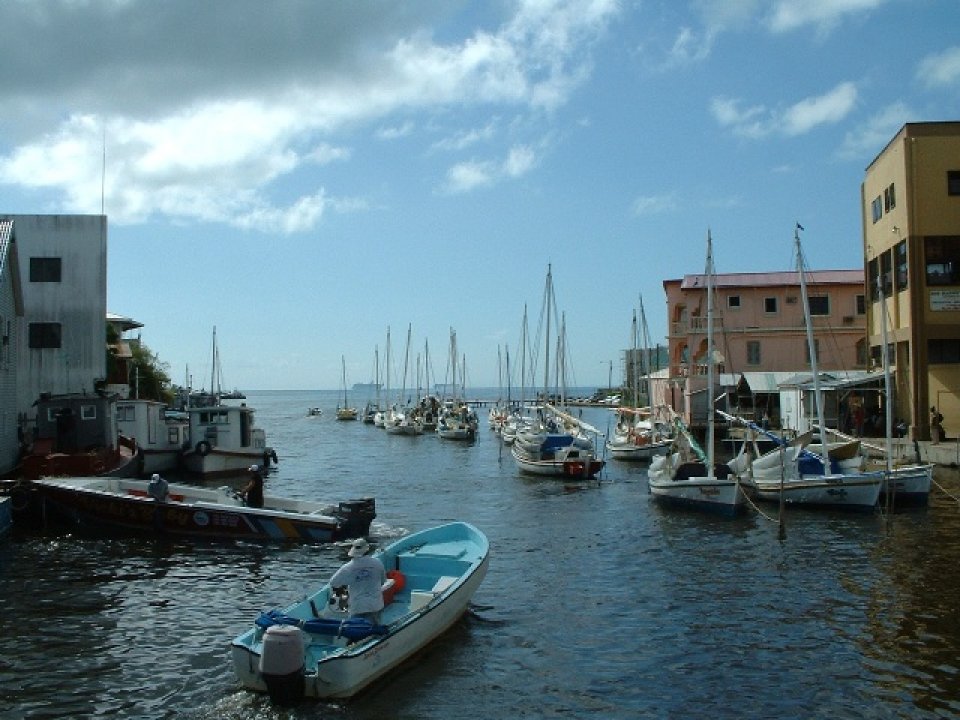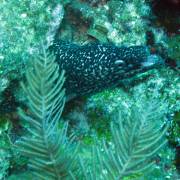Dive in Belize
Diving packages in Belize
-
Open Water Course
Get your PADI scuba certification, if you've always wanted to learn how to scuba dive, discover new adventures or simply see the wondrous world beneath the waves, this is where your adventure begins.Includes academic work, 5 confined dives and 4 open water dives.Course lasts approximately 3 days. TAX Included!506 $ More Information -
Barrier Reef Dive Trip, 2tk
Experience the brilliant underwater beauty of the Belize Barrier Reef.Glide over the spur and groove canyon formations while watching busily scurrying fish as you look out for the more elusive marine species.Hanging around typically in these areas are large groupers, nurse sharks, gliding eagle rays and turtles. On this tour, you will experience depths of 60-80 feet, starting off a 40 foot…85 $ More Information -
Blue Hole Day Trip
The Great Blue Hole, located in the ligthouse reef atoll, is one of Belize's best kept secret. You have a early start at 5:30 am and a 2 1/2 hr boat ride to the first stop. It makes it all worth it when you plunge into the hole 130ft and dive between 100ft stalactites while mystical sharks cruise by. You then make your way over to Half Moon Caye Wall which offers a vast amount of marine life…292 $ More Information -
Advanced Course
Involves 5 adventure dives. Mandatory adventure dives are deep and navigation other 3 dives upon your choice and availability. Course takes approximately 2 and a half days.428 $ More Information -
1 Day / 2 Dives Tank
2 Tank Local diving with many sites just a few minutes away by boat we do surface intervals here on our dock while we switch tanks and enjoy refreshments. Leaves at 9am or 2pm84 $ More Information
Scuba Diving in Belize

Around 40% of Belize’s land mass is protected —more than any country in the world. Because of this, Belize’s natural attractions is superlative, from the dense inland forest abundant with wildlife, to the translucent Caribbean waters scattered with cays.
The cays (pronounced keys, which are offshore atolls), and its barrier reef are the main attractions in Belize. The cays are coral, sand and/or mangroves islands, situated between the continent and the barrier reef, also on the barrier reef, and even inside the reef perimeters of the offshore atolls. Although the mangrove cays are normally uninhabitable by humans, they do provide a superior habitat for birds and marine life. Many birds, fish, shellfish, and marine organisms begin their lives within the protection of the mangrove.
One of the main attractions in Belize is its barrier reef, 300km/185 miles long. The Belize Barrier Reef is a long section of the 900 kilometres long Mesoamerican Barrier Reef System, which is continuous from Cancun to the Yucatán Peninsula, through Riviera Maya up to Honduras, making it the longest barrier reef in the Western Hemisphere and one of the largest coral reef systems in the world. Coral reefs and underwater limestone mounds are the most diverse and beautiful habitats in the sea.
The reef, cays, and atolls provide excellent opportunities for scuba diving and snorkelling. While diving the underwater world of Belize you will encounter a number of different reef types. These include fringing reefs, patch reefs, faroes, barrier reefs, and atolls.
Ambergris Cay shares the same Caribbean coral reef as the Bay Islands in Honduras, and its most popular dive site is Hol Chan Marine Reserve, occupying three square miles off Ambergris Cay's southern tip.
Intrepid scuba divers shouldn't miss the exhilarating experience of diving the Great Blue Hole, a circular sinkhole 1000 feet across and nearly 500 feet deep.
On the other hand, Belize's Turneffe Atoll, the largest atoll in the Caribbean, is comprised of over 200 islands, sheltering innumerable tropical species from rough waves. The atoll is ringed by sixty Belize dive sites, boasting an extraordinary variety of underwater landscapes and marine life. Here you can find all of the Caribbean tropical marine life, eagle rays, sharks, turtles, dolphins, moray eels, and occasionally whale sharks in addition to large schools of permit, horse eye jacks and dog snapper.
Not to miss the amazing opportunity to dive with whale sharks. From April until June you can dive with these majestic animals at the Gladden Area. Mutton and Cuberra snapper spawn here every year during the full moon, and the giant whale sharks come to feed on the spawn and to mate.
Belize offers all ranges of diving, from shore diving in shallow water to the deeps of the Great Blue Hole. The barrier reefs offer excellent diving for beginners such as at Hol Chan Marine Park (recently expanded to include Shark-Ray Alley) a few miles south of Ambergris Cay. Many dive of its sites also offer diving opportunities for experienced divers.
Visibility along the Barrier Reef tends to get poor during high winds, due to the predominant north easterly winds. However, diving on the lee of the atolls usually guarantees good visibility (average 100 feet). Diving the three atolls offshore allows for the best conditions. Unfortunately, once experienced the amazing visibility of Belize's waters, you'll become spoiled.
Currents in Belize tend to be surface currents in a northern direction. This northerly current creates a thin southerly counter current directly in front of the barrier reef and around the atolls of Belize. Also between the barrier reef and the mainland, the currents tend to travel in a southern direction. But the strongest currents are generated by the tides. Though tidal range is small, the abundant cuts through the barrier reef can restrict the flow of water and cause strong local and temporal currents of up to 1.5 knots. These breaks in the barrier reef are an excellent habitat for pelagic species and rich coral growth.












